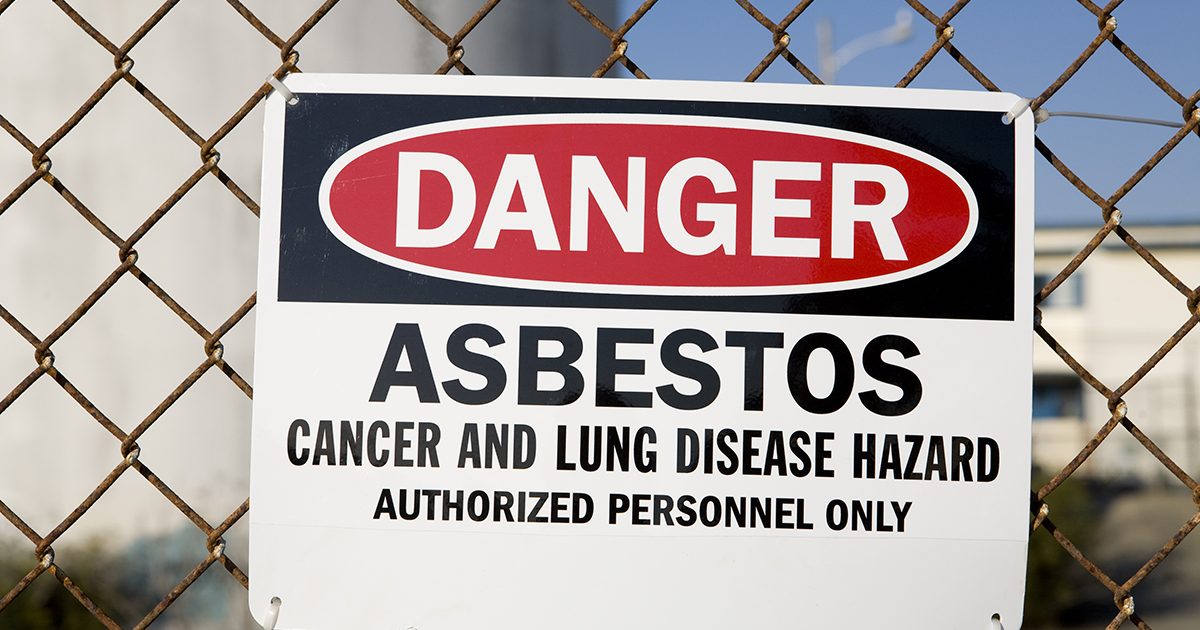Mesothelioma & Asbestos
- An 81-year-old widow, Joan Marie Smith, says that washing her husband's work clothes exposed her to asbestos and is what caused her terminal cancer diagnosis.
- Mesothelioma is a rare cancer, and an "overwhelming majority of the time,” asbestos is the cause of this cancer.
- Mesothelioma treatments have been slow to develop over the years, but there are now a few options for those facing the disease.
Dr. Raja Flores, chairman of the department of thoracic surgery at Mount Sinai, tells SurvivorNet that getting exposed to asbestos through washing a spouse’s clothes is “actually typical.” He adds that he’s seen a number of patients who develop mesothelioma from washing the clothes of someone who’s had direct contact with it.
Read MoreThe survival rate for mesothelioma is about one to two years, according to Dr. Friedberg, “so it’s one of the most deadly cancers.”
Dr. Friedberg discusses mesothelioma and asbestos.
How would Smith have been exposed to asbestos, causing her to develop this type of cancer decades later? Well, her late husband, Ron, who died at 66 years old in 2000, worked for the Imperial Chemical Industries plant, and she believes doing his laundry for decades while he worked at the industrial plant, from 1948 to 1991, caused her to be exposed.
“I was responsible for the laundry so I handled everything and sometimes I would shake or wipe clothes to get rid of excess dust and dirt," Smith says. "I never visited ICI Billingham, but I am aware of people who have developed asbestos-related diseases from working there."
What is Asbestos? How Does it Cause Cancer?
After reading Smith’s story, you may be wondering what exactly asbestos is, and how it can cause cancer.
According to the Occupational Safety and Health Administration (a large regulatory agency of the U.S. Department of Labor that originally had federal powers to inspect and examine workplaces), asbestos is a group of naturally occurring minerals that are resistant to heat and corrosion. It has been used in building products, such as insulation for pipes, floor tiles, building materials, and in vehicle brakes and clutches.
Why and how would this group of minerals cause cancer and other health risks? Well, asbestos fibers are too small to be seen with the naked eye. Breathing asbestos fibers can cause a buildup of scar-like tissue in the lungs called asbestosis and result in loss of lung function that often progresses to disability and death, according to OSHA. This is why personal protective gear must be worn at all times when handling asbestos.
It also causes lung cancer and other diseases, such as mesothelioma of the pleura, which is a fatal malignant tumor of the membrane lining the cavity of the lung or stomach; mesothelioma is what Smith has.
"Before my diagnosis I had never even heard of mesothelioma,” she says, “but I now know how bad it is. I try and remain positive, but I'm finding I'm becoming less and less independent and more reliable on others.”
Smith says she knows “nothing can make up for what's happened,” but she’s looking for answers. “If anyone who worked with Ron or at the plant around the same time could come forward with information, I would be so grateful. I deserve answers regarding this illness."
Mesothelioma Symptoms
Dr. Friedberg says that the most common presenting symptom for mesothelioma is shortness of breath. He explains the reason this happens:
“Everyday, a couple of cups of fluid comes out of the lungs (this is normal), and then gets absorbed by the lining of the chest cavity, primarily along the diaphragm, but really throughout,” he says. “Anything that throws that balance out of whack can cause that fluid to accumulate.”
Mesothelioma, or any cancer effect in the pleura (a thin layer of tissue that covers the lungs and lines the interior wall of the chest cavity), “you basically have plugged up the holes where the fluid gets absorbed, and at that point, it’s like putting up a dam. … When that fluid accumulates, the lungs get squashed, people get short of breath.”
Most often, Dr. Friedberg explains, people get misdiagnosed as having a pneumonia or something else “because someone listens to them, they have decreased breath sounds, they get treated. So because it’s such a rare cancer, it’s often misdiagnosed for several months.”
Treating Mesothelioma
Mesothelioma treatments have been slow to develop over the years, but there are now a few options for those facing the disease. In October 2020, the U.S. Food and Drug Administration approved Opdivo (nivolumab) in combination with Yervoy (ipilimumab) as a first-line treatment for mesothelioma that can’t be removed with surgery. It was the first drug regimen approved for mesothelioma in 16 years and the second FDA-approved systemic therapy for mesothelioma.
In 2019, the FDA approved the NovoTTF-100L System, which is a wearable medical device about the size of a backpack that uses electric fields to disrupt solid tumor cancer cell division. It was approved to be used in conjunction with a standard two-drug chemotherapy to treat patients with malignant pleural mesothelioma that’s also unable to be removed with surgery.
Before the approval of NovoTTF-100L, the only FDA-approved therapy for patients with these types of mesothelioma was a combination of chemotherapy drugs called pemetrexed and cisplatin.
Contributing: SurvivorNet staff
Learn more about SurvivorNet's rigorous medical review process.


